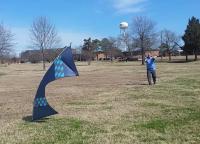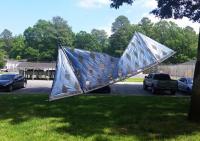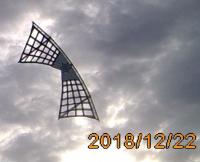-
Posts
3,016 -
Joined
-
Last visited
-
Days Won
332
Content Type
Profiles
Forums
Gallery
Downloads
KL Shop
Blogs
Articles
Everything posted by riffclown
-
Exactly but I was also referring to the way changes in venting levels from kite to kite changes the way the kite loads more drastically than just the surface area total. A full sail loads up with a certain balance across the whole sail. Move over to a B-Series Midvent for instance and you've provided relief to the outside of the sail but also emphasized the belly load. A full Vent configuration does that even more. Eventually you are flying only the center panel. The Spider does the exact opposite. By venting the belly and not the outer part of the wings it refuses to load up in any way and becomes actually a bit awkward to control in strong winds because it isn't balanced. I'm arguing that balancing all of that a bit is some of what Bazzer was after with the Phoenix but in the full sail at least he may have vented a bit much. Once you get to his mid-vent it kind of has the balance I'm talking about. The Phoenix vented maybe even more so. My approach is very gentle relief over the entire sail. It still loads up but the higher pressure on the sail under the higher winds doesn't overpower. You can still load but it doesn't have that tendency to over load.
-
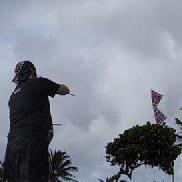
New MV Purple(s) - Classic Colors Diamonds Style
riffclown replied to riffclown's topic in Kite Making
This kite has been spotted at WSIKF!! -
Would love to hear other opinions about venting patterns, especially from Phoenix, Frelilein, Shook and other owners of the different venting styles. FWIW, they all have advantages and disadvantages but the most important issue is, how does a venting style affect you as a flier??
-
The PolyMax holds a crease well, sews well and is a good very low cost fabric to work with.. The Cons, It does tend to have some wrinkles, color inconsistencies, and only comes in the one color. If you are experimenting with a build idea, this is the lowest cost way to get there.
-
After realizing I was completely hijacking the other conversation, I split this off to its own topic.. I'm going to break with conventional wisdom and disagree with what we've always thought on one minor point. The B-series taught Rev how to vent from what is now the standard accepted approach. Mid-vent take a stripe off of each wing and replace with screen . Full vent, Take 2.. etc. Bazzer's Phoenix started venting the trailing edge (including on the full sail) which changes the way the kites load up. It kind of de-whumps the sail if you know what I mean. Right or wrong it was a different approach that really seems to come into its own around the full vent level. The Spider as you said, moves lamost all of the flying surface outside the spars which works but the kite has very little glide and no real belly to load. It was yet another approach. @John Barresi's Djinn design smooths out the limitation of the B-Series by making the venting profile follow the natural curvature of the loaded sail. It adds a consistent relief in a more effectively targeted area. Personally (and this is why I disagree), in those versions of venting, (including on the Shooks) you still have a basic solid panel in the center which in essence becomes the axis of your flying surface. Too much belly throws off the overall balance of the sail as much as "not enough" affects the Spider. You end up flying the belly which can lose fine control of the outer surfaces. IMO, a balanced approach to venting across the entire sail whether a small amount or a large amount gives you the best result. You still have your balanced sail feel on the handles. You still have your glide. Most importantly, no part of the sail becomes overpowered in a gust. We've all made tweaks to existing designs to get what we want from our kites. The balanced venting approach is really hard to set down once you've tried it.. It feels like a full sail, flies like a full sail but handles the high wind in ways you'd never expect. Bottom line, is I feel a balanced approach to venting gives you the most stable sail design, within your targeted wind window and even just above it. It takes more work to make a kite this way but it's truly worth it for the increase in feel and handling. Winds 18-25 Flying balanced diamonds venting Full Vent 72" style. Blisteringly fast but still balanced flight. Winds were whipping this year at the Rogallo. 1.5 size and my balanced diamonds mid venting.. Notice the flags in the foreground at the beginning of this vid.
-
The "Classic" is a later 1.5 version that added Springs to the B-series design. The panel layout is exactly the same. They were marketed mid to late 2017 as the replacement for the B-Series which they were no longer producing as of 1-1-2017. They added Springs and stopped including the extra frame with it. As a side note. I just visited Rev's website and noticed they no longer "offer" the Classic.
-
My original Reflex (pictured above and here) was one of the Earlier runs run. They may have made modifications later. When I sold mine the new owner noticed one of the vinyl "sleeves" I placed on it had split and did the pictured work. Except for the "black sleeve in the pic above., this is how the earlier runs of Reflex kites came fitted. Stock configuration (Prior to the mod) is pictured here FWIW, I was an early adopter, Mine was also an early secondary market item.. It wasn't for me. The float isn't what I was looking for. My first review of this kite And documentation on the Mod by @SHBKF
-
Actually I didn't use Heat Shrink when I did mine originally.. I just heated the modified vinyl endcap enough to slip it over. it was plenty tight once cooled. Whatever it takes to do the job without adding significant weight.
-
This was a change made by Rev to go with ferrule based endcaps (slide inside the spar) as opposed to caps which enclosed and protected the spar. In the original style (caps) a spar with a small split could be glued and still used as long as it wasn't the ferruled junctions of the LE. The slightest crack in the new system becomes an instant stress point. This is one of the changes made by Revolution that had me seeking other options. The different size framing has some different characteristics but not all are advantages. It's also worthy of note that in the reflex design it pays you to sleeve the friction point between the spar and the spring itself or the spring will eventually saw the spar in two at that point.
-
Removing the springs Seems to be a common solution. Do you think the breaking rods might be a recurrence of the green trimmed issue from a few years back?
-
indeed and agreed.
-
Couple of Snaps from Screen Captures.. didn't want to flood the Gallery
-
Personally I prefer the Ashes over the"full sail" Phoenix. The venting along the trailing edge makes the full sail load up strangely in my opinion.
-
Ashes is designed as a light wind kite. I would think no more than 10-12mph as the upper range (personally I'd lean more towards 5-8mph).. You can add a heavier frame but in the end that will just promote stretching the sail material, and that's a one way trip. IMO If you need more than a black race frame you should probably consider putting it into a vented sail for that particular day.
-
-
I've also mixed it with Ripstop Nylon but i also don't get these kites wet.I think wear and stretch would be very different for these materials.
-
I've used it quite a bit. I've mixed it with Icarex with no issues. Good results. Keep in mind the grid on the challengemax is more like an ripstop grid than it is Icarex. One thing I have noticed about the PolyMax is it does have small color inconsistencies and the occasional run or overlap wrinkle in the fabric. @$3 a yard I just work around it though. Icarex and Challenge PolyMax Challenge PolyMax and screen Challenge PolyMax Challenge Polymax and Icarex
-
Just uploaded a few clips from my Hawaii trip to youtube.
-
Honestly it was one of my early Mesh kites made out of tails.. it absorbed a lot of seawater and became VERY heavy. FWIW, he didn't hesitate at all. I still side slide over water every chance I get. But I've also learned a lot since that first incident.
-
Like everything else. it comes with time and practice. There is no video, no lecture or no observation session that will substitute for time on the handles practicing. You can get pointers and instruction for anywhere both good and bad. You can only learn skills by practicing them. FWIW, I spent literally days honing my inverted side slide. I put a kite in the ocean first day.. John Barresi went into the drink and retrieved it..
-
If you are truly just starting out we'd be remiss if we didn't refer you to a few truly foundational videos. The only true disconnect between Club 38 and the rest of the quad flying world is Club 38 wasn't consistent with established terminologies. The techniques are mostly good but the name for the maneuver might not be the same. Not saying anything is wrong with it. Just identifying the disconnect. I flew kites with Joe Hadzicki a few weeks ago and I have nothing but praise for the design. I finally got to thank him for his invention and showed him a few of my own "improvements" FWIW, he made a real difference in the kiting world and we are indeed grateful. I also have to agree with Paul. Flying with others makes all the difference in the world. I hit only a few events a year and they are usually 2-5 hours drive each way. FWIW, I've flown with Paul LaMasters, I've flown with Joe, and I've flown with John Barresi. I also learned something valuable in my mind from all three. Bottom line, if you can really learn from it, the source doesn't matter. Whether you pay a premium price for private lessons or glean it all from youtube is also a personal choice. The important thing is you learn and have fun in the process. Paul taught me a lot in one day about kite attitude and I respect him for it. His ideals for kiting and mine don't necessarily always line up but his technique and flying style is unique. I'd fly with him far more often if I had the opportunity. As John would say, "Fly with intent." I spent several days with John learning about the kites and the person that flies them. Again our styles are very different but his advice is solid and sound. Joe still has a special zeal to teach the newcomer that is refreshing after all these years. I watch him tirelessly work with the public at my latest event. He put a smile on a lot of faces. When it comes to sharing kite knowledge, none of these fliers are standoffish in any way. they will share their knowledge and insights with you without hesitation.. Club38 was a sharp turn in Rev's business approach. Some of Rev's changes impacted fliers (including me) and some dealers worldwide and not necessarily in a positive way, the competitors to the market have in many cases improved on Joe's design. This includes improvements that have been suggested to Rev over the years. FWIW, they are all variants of the Hadzicki wing. Some direct from the source, some improved but at this point the design is public domain now and you can find pretty much anything you want based on it.
-
Package Mailed Today.
-
Quick Clip from Sandy Beach.. Once again, a Phenomenal place to fly..
-
As always, astounding work...
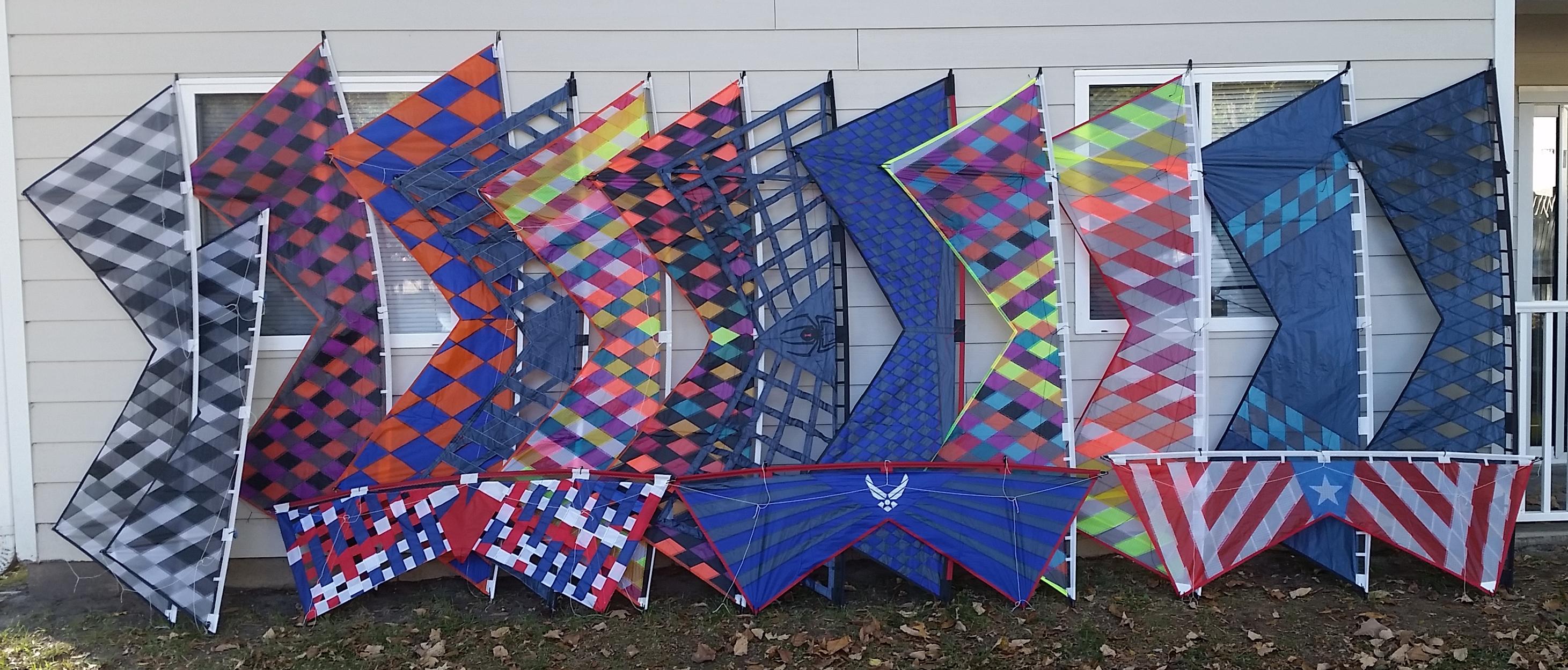


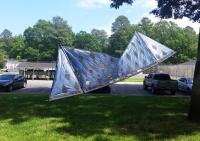

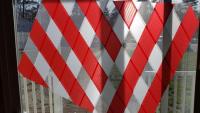
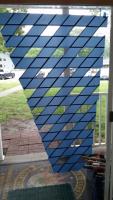
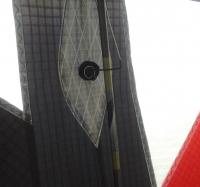


.thumb.jpg.d6591d1f34b64c87dfe3b62bd05b5129.jpg)

